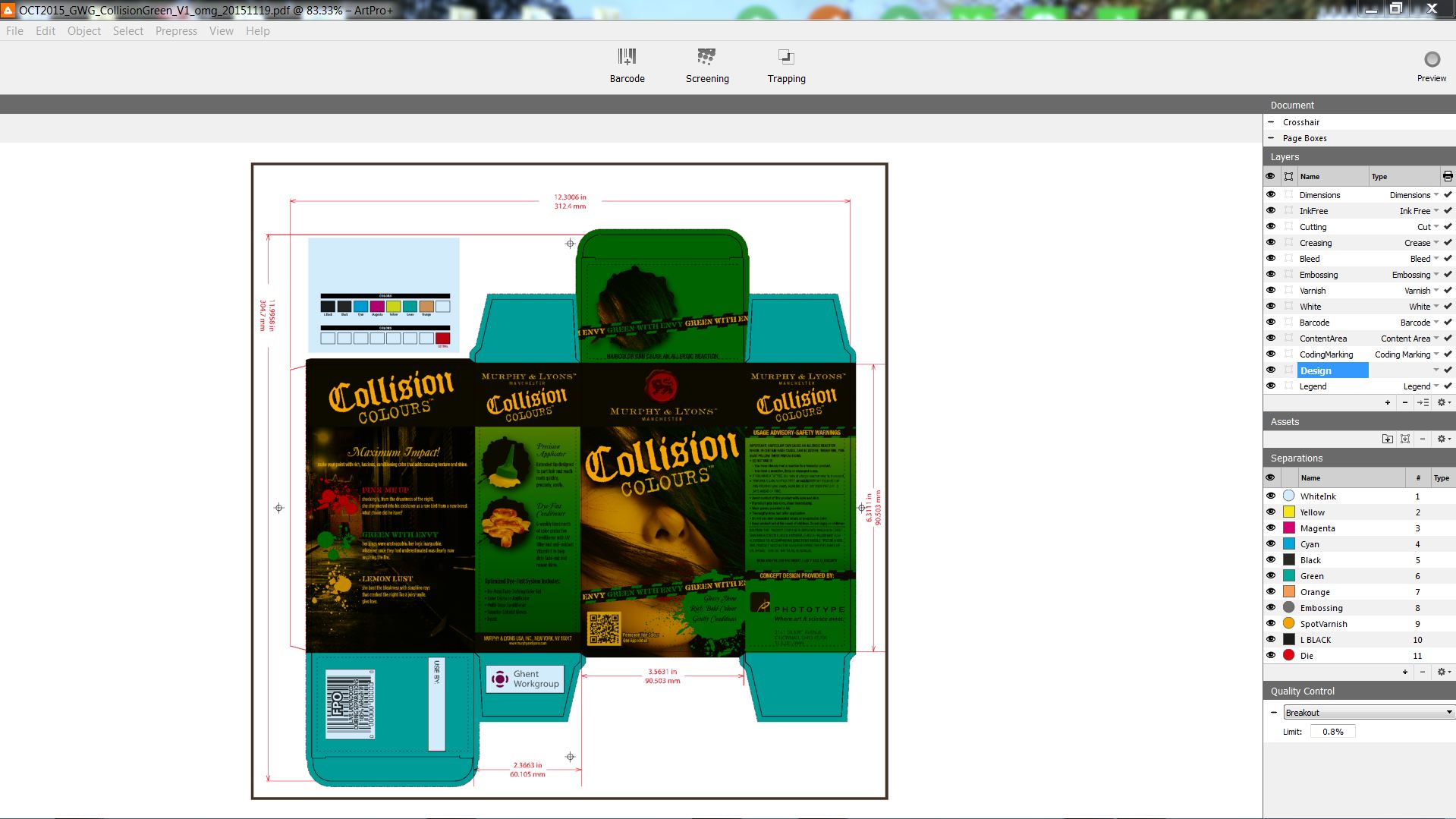
Standardized way to identify production processing information enables increased interoperability and automation
GHENT, BELGIUM – 26 May 2016 - The Ghent Workgroup (GWG) announces the release of a new specification describing a standardized method for storing data corresponding to production processing steps within a PDF file. This specification optimizes the entire preproduction process, and enables improved productivity and lower production costs.
A PDF file can serve as a container for all graphical production data, printing and non-printing, of a package, label, or any other print file. Associating these processing steps and content data means using metadata within the PDF file to define and categorize different types of production processing steps within the file in a standardized way. Having this processing step data embedded in a PDF file makes it easy to validate structural components of design through conventional proofing methods. In addition, overlaying processing step data with design elements in the same file enables precision alignment of design elements and makes preflighting all aspects of the job easier.
A major benefit of this standard is the way its interoperability can improve interaction between different technologies and companies. The standardization results in an increased predictability, repeatability and consistency, which significantly reduces errors. By standardizing the association of production processing steps and data, systems and processes can be easily automated within a workflow. This all leads to an increased productivity and lower overall preproduction costs.
David Zwang, Chairman of Ghent Workgroup, comments: “One PDF file can now serve multiple purposes, and can also be used by many people in the pre-production and production process according to their needs. Normally, a PDF file can be built on different layers (optional content groups) according to the PDF specifications. These layers include all the things that precede or proceed the actual printing, like production instructions proofing for validation, dielines, ink specifications, embossing, and braille. Through this new approach, the PDF files are described more intelligently, beyond just the printable objects it contains. This improved PDF communication and extended sharing will be of huge benefit to all involved vendors, printers and end users like brand owners. It will not only optimize the entire preproduction process, but eventually lead to better quality output.”
Created by the industry, for the industry
The PDF Processing Steps Specification was developed by the packaging committee of the Ghent Workgroup. The chairs of the committee, Christian Blaise, Owner at bleuprocess and Consultant for Square, Steve Carter, Senior Vice President of Technology at PhotoType, and Lieven Plettinck, Director Software Engineering at Esko, are looking forward to the acceptance and integration by all key industry players.
Lieven Plettinck comments: “ The packaging committee believes that the GWG PDF Processing Steps Specification is an important step to increase productivity of the packaging supply chain. It will standardize the way digital data, included in a PDF, are communicated through the entire packaging pre-production workflow. This standardization will take away the need for manual intervention and dramatically reduce human errors.”
Steve Carter comments: “This new Processing Steps Specification will allow one PDF file to serve multiple purposes throughout the supply chain. By only having one PDF file, logistics and accuracy are simplified. This ‘one version of the truth’ PDF file will lead to a higher degree of quality and interoperability for both users and systems.”
The design, development, and production of all sample files for the Processing Steps specification were graciously provided by PhotoType. These sample files can be used for testing, demonstrating and other development processes. The GWG retains the rights to the files, but is generously allowing users and vendors alike to use these files for testing, as long as they are not altered from their original format and not used for commercial gain.
Christian Blaise works very closely together with Square and Philippe van der Schriek, Graphical Workflow and Performance Manager of L’Oréal Consumer Products Division in Europe, who explains: “In cosmetics packaging there are many design aspects and effects like varnish and embossing. This can make the reading of files very difficult and leads to many misunderstandings throughout the graphic design chain. 3D visualization gains importance for e-commerce, and requires even more automation and standardized definitions of all involved elements. This is why the work of the packaging committee of GWG on the ISO 19593 Processing Steps Specification is so important. These allow us to work with our partners on recognized standards, which are accepted and applied by everyone.”
As all the GWG resources, this new specification and accompanying documentation are available for free and can be downloaded here, alongside the just recently released 2015 PDF Specifications for print and packaging: Details are in the attached document






